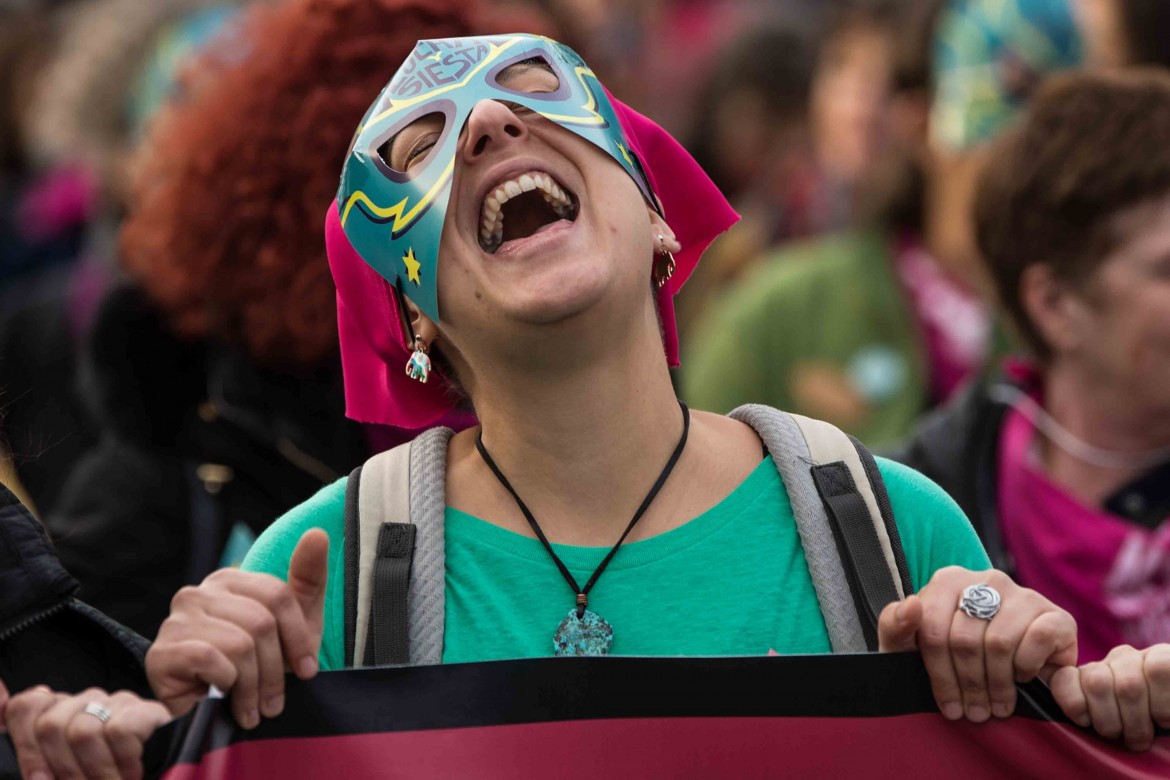Commentary
Femicide on the rise, but officials are withholding funds to protect women
A woman is murdered every 72 hours in Italy. The most recent died on Friday, at 30 years old, following a pattern recognizable the world over. Despite politicians’ proclamations, investment in women’s centers is dismal.

The latest femicide took place on Friday, on the eve of the big march organized by Non Una Di Meno in Rome, in which NGOs, anti-violence centers, social movements and individual women and men expressed their clear rejection of male violence against women.
Her name was Ana Maria Lacramioara Di Piazza, she was 30 years old and, while we are still waiting for the autopsy results, it appears she was pregnant with the killer’s child. The man who murdered her had been in a relationship with her for about a year, while married to another woman. After cutting her throat and hitting her on the head with a blunt instrument, he tried to eliminate the evidence, hid the body in a deserted area and went about his work day as a contractor, taking a break in the afternoon to go to the barbershop.
This murder happened in Partinico, in Sicily, but it’s the same pattern recognizable not only in Italy but all over the world, with a similar script playing out a symbolic patriarchal dynamic, whenever women claim their freedom in an explicit way, whether by refusing to continue a clandestine relationship (as it seems Ana Maria had decided) or by deciding to part ways with those men who had been using them in a specific role. The violence ends in physical elimination, whether committed by current or former boyfriends, husbands, fathers, brothers, whether located in small towns or elsewhere, in the south or in the north, in Italy or outside of Italy.
When reporting this data, we should take into account both the numbers (in Italy alone, a woman is killed every 72 hours, three times out of four inside the home) and the substance of the phenomenon: the male possessive instinct which is a common denominator of this violence, which is unmistakably “gender violence,” given the domineering and phallocentric character of the actions of persons of one gender against persons of the other.
In this scenario, it does no good to raise the alarm about an “emergency,” given that this phenomenon is, in its full seriousness, a structural one—i.e. systemic, cultural and political as well as social—and yet, in an unacceptable state of affairs, the anti-violence centers, among the most precious safeguards of freedom for women and their children, are suffering.
Only a few days ago, Lella Palladino, president of D.i.Re (Women Online Against Violence), which also took part in the march, noted how few and poorly geographically distributed these centers are, and how negligible the level of public support is. Mariangela Zanni, a councilor of D.i.Re, took the data from the latest available ISTAT surveys, for the year 2017, and pointed out that if we divide the total funding by the number of women who were helped by these centers, the funding amounts to a mere 76 cents per woman per day.
Even in the conditions of the “code red” that politicians are keen to proclaim, it doesn’t seem to be possible to enact even the most basic solutions, such as facilitating the disbursement of the already-meager funding which many times lies unused in the coffers of the local municipalities. This is what happened with the “Thamaia” NGO and women’s center in Catania, now going bankrupt, which only a few days ago publicly asked the competent institutions to say what happened to the €70,000 allocated for their anti-violence center. The same is happening to “L’albero di Antonia” in Orvieto, at risk of having to close down its operations due to the delayed disbursement of funds. And we are seeing the same situation in Potenza, as the president of Telefono Donna, Cinzia Marroccoli, told il manifesto on Friday.
This is why, in a country that loves bombastic proclamations of public crises (when it doesn’t outright support the furious hatred against living human beings, or the reassuring dominance of “traditional families”—of which the Partinico murderer is, after all, an example), we must continue to protest: in the squares, in the libraries, in the schools, all the way to the courthouses, where feminist associations have become parties to civil lawsuits: this is already happening in Ravenna, in L’Aquila, in Alghero and in many other places. We must also emphasize to the fullest that the message coming from the feminist and transfeminist march Sunday was the fight against male and gender-based violence, not only in Italy but everywhere in the world.
It must be recognized that feminism (and its practices), in its wider movement and its waves, is in no way a conciliatory stopgap, but a radical, experiential and irreducible prodding impulse, able at the same time to remain creative: fighting against a culture of death, the background for a rampant narcissistic neoliberalism.
It might sound like a war, but in fact it is simply the stubborn pursuit of a practice that, like an old loom, picks individual threads to weave a fabric that is unraveled and woven again every day, in every place, no matter how isolated, whether visible to the outside or not. From our individual threads, we weave tapestries like the Argentine Pañuelos for the legalization of abortion, in the festive fuchsia colors of the Ni Una Menos movement, or the masks of the luchadoras of Lucha y Siesta—and every other fabric woven together from the intricate threads of relationships among women.
It is not easy to keep a steady course in a context that tends to diminish, discredit and dismantle all places dedicated to women, starting with their very words. That’s why the revolt must continue, fueling this inexorable rising tide that brooks no negotiation. It is a fight for everyone, of every gender.
Originally published at https://ilmanifesto.it/femminicidi-in-aumento-ma-i-fondi-latitano/ on 2019-11-24
